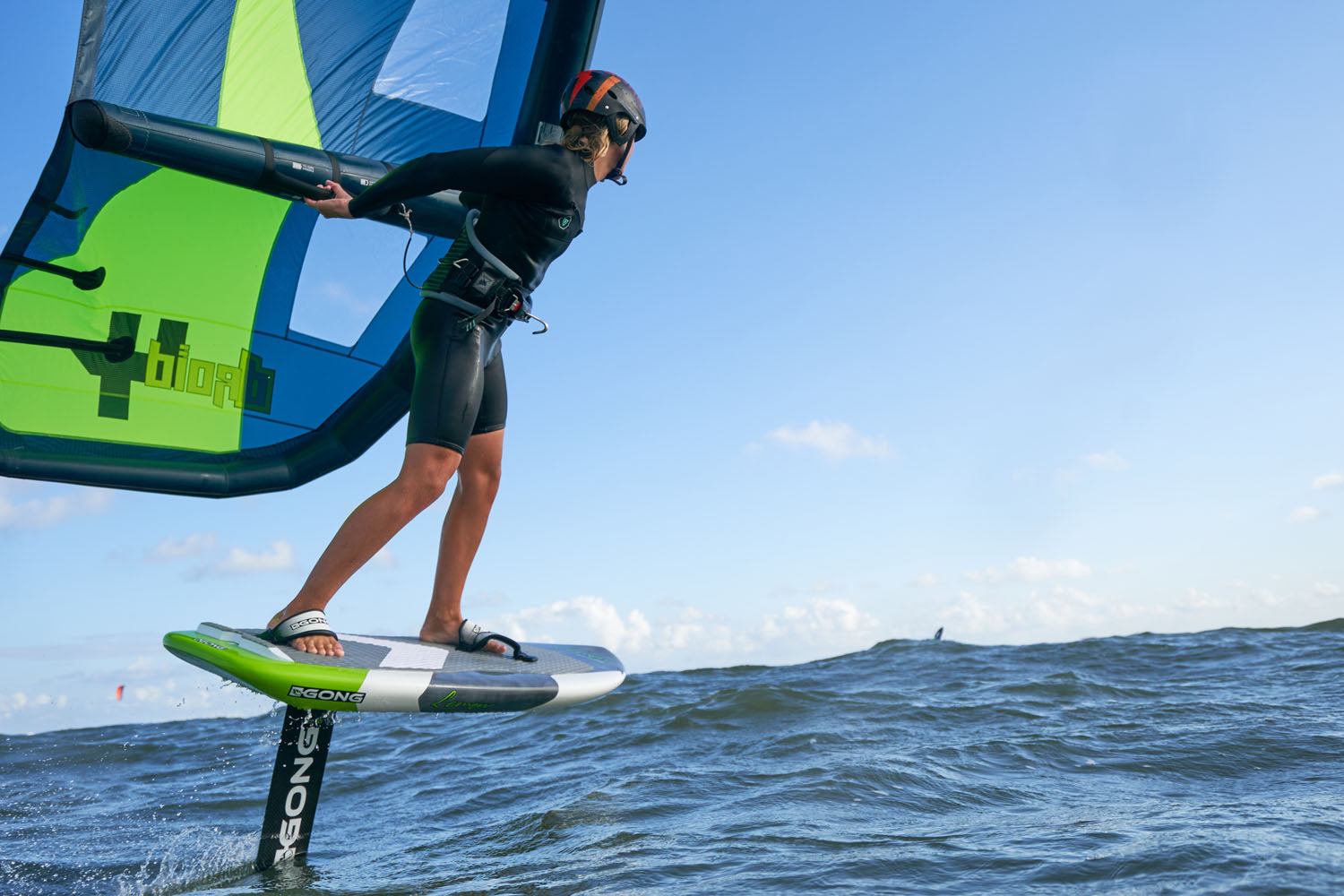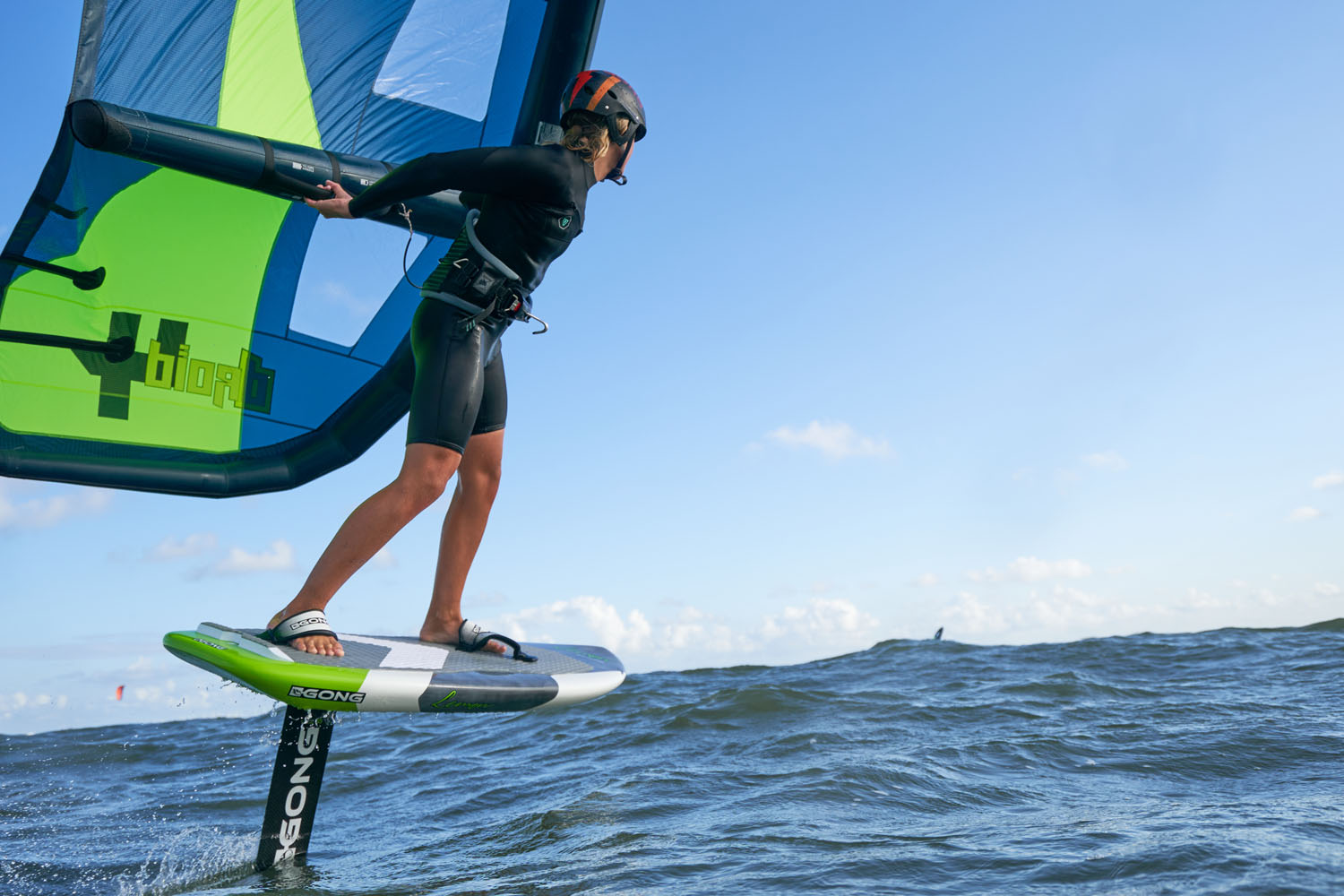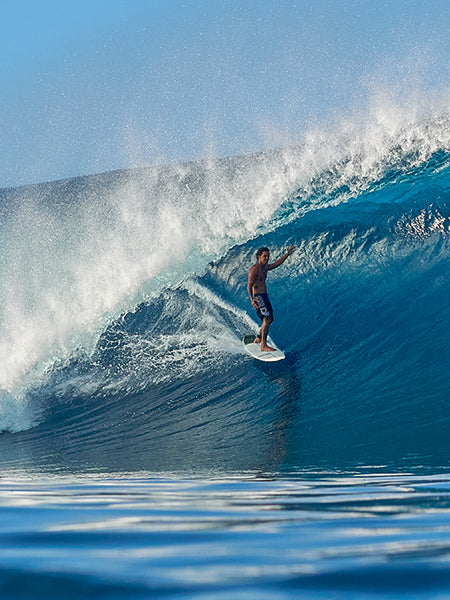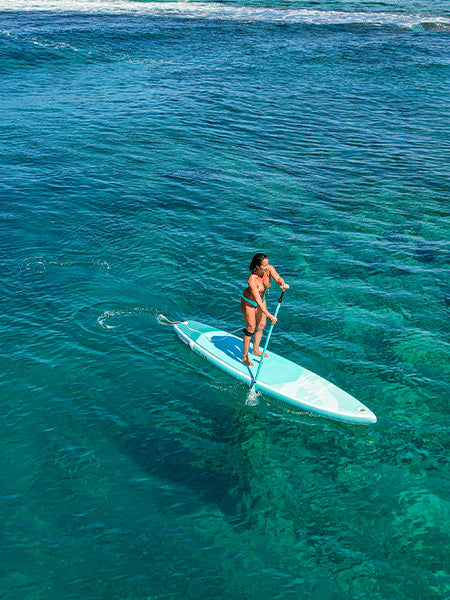Riding in the blind position

Sailing blind means sailing with the wing behind your back. The name blind comes from the fact that you cannot see where you are going when riding. Indeed, sailing blind can disturb you when sheeting in or shocking the wing and the speed you will have in relation to the wind. But don’t worry, this position can be mastered in one session.
The level required to start blind sailing is only to know how to ride easily in toeside and know how to jibe. On the other hand, the wipe-out can rip your shoulders off, so be careful to prepare to let go of the wing because falling with the wing in your back and your hands stuck in the handles may sting a little…
Ride toeside
If you want to go to the blind position, you’ll have to get toeside. I therefore advise you to try this maneuver after exiting the jibe (normal stance to toeside). In fact, you usually get out of a jibe speed because you’re bearing off but with a little less speed than at the start which will facilitate the management of the wing. If you try to do this while sailing crosswind with speed, you would have a harder time going to the blind position and you may get ripped off in an unpleasant wipe-out. In addition, if you go too fast the wing may slip under your board and be damaged. So once you are out of your jibe, bearing off and without too much speed you will be able to go blind.
The wing
First, you will need to let go of your back hand. As soon as it is released, you will have to grab the handle where your hand was located before. Once this is done, you can let go of your front hand and get the rear handle of the wing behind your back.
If it takes you too long to grab the handle, this usually ends up in a fall or at least a loss of speed. To get there more easily, I advise you to bend your ex-rear arm by bringing it towards you. By doing this, you will bring the wing closer to your body with the front handle so that the path to the rear handle will be much shorter. To have more control and comfort, I advise you to take the rear handle in supination.
The blind
Now that you’re officially in the blind position, you can slightly extend your arms and hang on the wing to be more comfortable. You can try to sail at different speeds to find your bearings and get used to the feeling. For sheeting in and shocking, it’s mainly your ex-rear hand that will do the job by pulling or releasing your arm.
Your back arm should be in tension (you should feel the wing pulling you) but remain almost fixed. You can also twist your shoulders more or less to sheet in or shock without moving your hands. The ideal is to combine everything.

Back to the normal
So you know how to ride blind, but you are not going to stay in this position forever. So to get back to the normal stance, you have two choices:
- Either you switch hands in the opposite direction,
- Or you change tack (jibe / tack).
Honestly, the first solution is the less effective of the two because you will lose speed and risk a stupid fall. On the other hand, the jibe or the tack is much simpler and more effective to get out of this situation. For the jibe, you just have to bear off slightly, let go of your back hand, make your curve, rotate the wing 180 ° and grab the rear handle with the hand you previously released but this time facing you. Ditto for the tack, you just have to let go of the back hand, pass the wing over your head, make the curve and catch up with the wing.
There you go, you now know how to ride in the blind position. All you have to do is grab your gear and get in the water…








